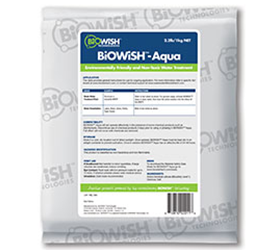 Bioaugmentation Process Increases Slaughterhouse Effluent Quality
Bioaugmentation Process Increases Slaughterhouse Effluent Quality
BiOWiSH® Technologies conducted a client project in conjunction with our local partner in South Korea, Smart Bio Korea (SBK) to measure the effectiveness of BiOWiSH® Aqua on effluent quality. The introduction of BiOWiSH® Aqua into the bioaugmentation process helped improve the effluent quality of a South Korea slaughterhouse in order to meet stricter regulations on discharge.
This South Korea slaughterhouse has continually grown its capacity by 30% over the past few years.
In fact, the present rate of 1600 pigs per day meant its waste generation increased
from 190 to 300 m³/day.
This increase results in larger waste loads and stricter discharge limits that find management facing significant capital expenditure and third-party operation fees to meet environmental compliance.
Solution
Smart Bio Korea (SBK) provided an alternative solution. Introducing small-process
modifications and implementing a bioaugmentation program using BiOWiSH® Aqua, SBK
proposed a 10-week program to achieve effluent compliance.
We found that, over the course of the initial 10 weeks, BiOWiSH® Aqua implementation:
- Reduced Biochemical Oxygen Demand by 76%
- Reduced Chemical Oxygen Demand by 76%
- Reduced Suspended Solids by 89%
- Reduced Total Nitrogen by 85%
- Reduced Total Phosphorus by 61%
Key Takeaways
Throughout the 10 weeks the bioaugmentation program with BiOWiSH® Aqua improved its wastewater treatment and increased capacity to accommodate growth in production. Within six weeks of commencing the process, the slaughterhouse’s effluent met all regulatory discharge limits. The site continues to use BiOWiSH and continues to operate within compliance.
- Improved effluent quality with all parameters within compliance limits using existing plant infrastructure
- Program cost offset by lower sludge production and energy expenditure per ton of effluent treated
- Improved effluent clarity
- Improved plant stability reported by operator
- Planned expansions for the treatment units have been postponed; this means significant capital avoidance





